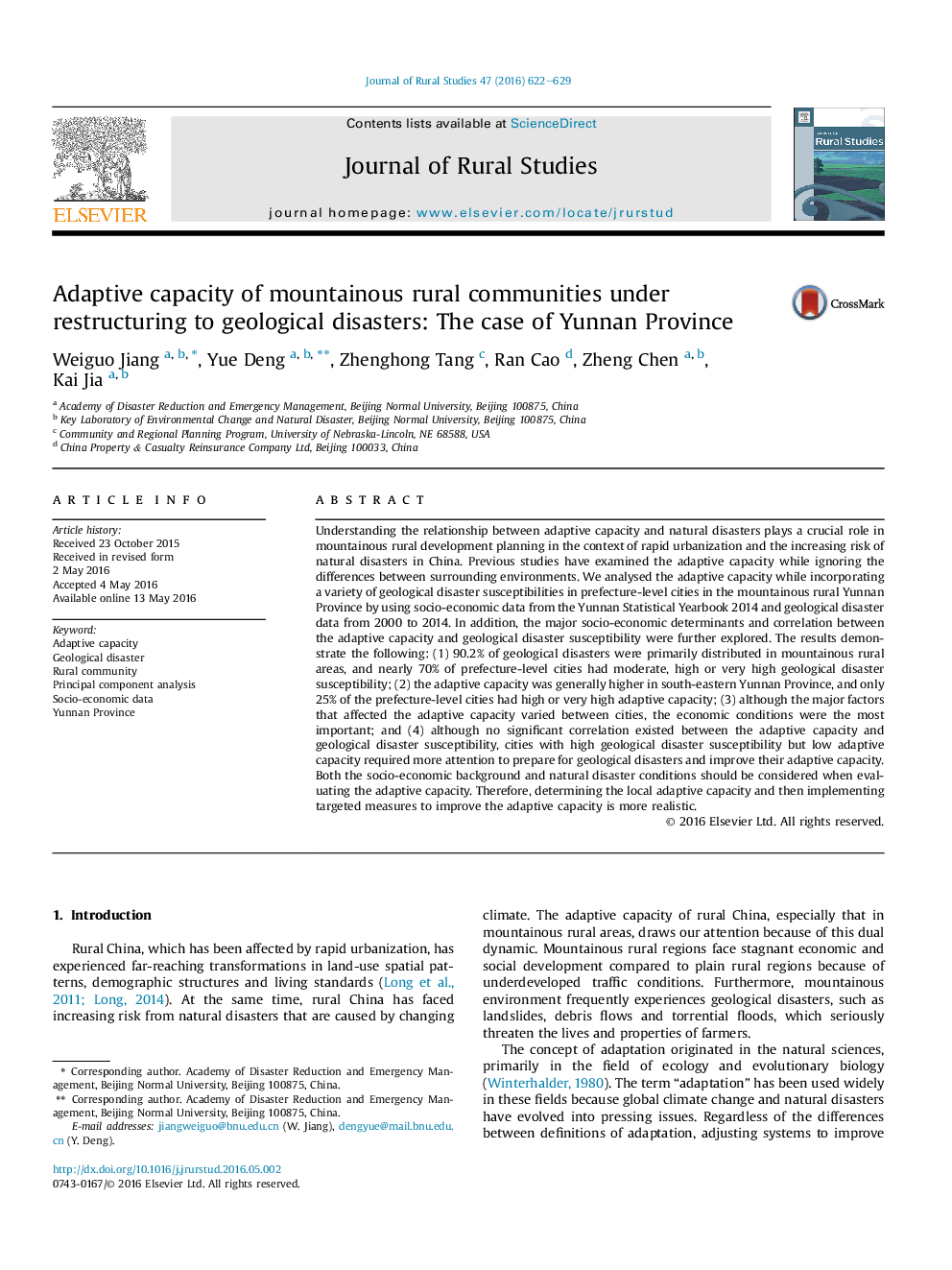| کد مقاله | کد نشریه | سال انتشار | مقاله انگلیسی | نسخه تمام متن |
|---|---|---|---|---|
| 6460188 | 159959 | 2016 | 8 صفحه PDF | دانلود رایگان |
- Spatial distribution of the geological disaster susceptibility was analysed.
- Adaptive capacity of mountainous rural communities was evaluated based on principal component analysis.
- The correlation was assessed between the adaptive capacity and the geological disaster susceptibility.
Understanding the relationship between adaptive capacity and natural disasters plays a crucial role in mountainous rural development planning in the context of rapid urbanization and the increasing risk of natural disasters in China. Previous studies have examined the adaptive capacity while ignoring the differences between surrounding environments. We analysed the adaptive capacity while incorporating a variety of geological disaster susceptibilities in prefecture-level cities in the mountainous rural Yunnan Province by using socio-economic data from the Yunnan Statistical Yearbook 2014 and geological disaster data from 2000 to 2014. In addition, the major socio-economic determinants and correlation between the adaptive capacity and geological disaster susceptibility were further explored. The results demonstrate the following: (1) 90.2% of geological disasters were primarily distributed in mountainous rural areas, and nearly 70% of prefecture-level cities had moderate, high or very high geological disaster susceptibility; (2) the adaptive capacity was generally higher in south-eastern Yunnan Province, and only 25% of the prefecture-level cities had high or very high adaptive capacity; (3) although the major factors that affected the adaptive capacity varied between cities, the economic conditions were the most important; and (4) although no significant correlation existed between the adaptive capacity and geological disaster susceptibility, cities with high geological disaster susceptibility but low adaptive capacity required more attention to prepare for geological disasters and improve their adaptive capacity. Both the socio-economic background and natural disaster conditions should be considered when evaluating the adaptive capacity. Therefore, determining the local adaptive capacity and then implementing targeted measures to improve the adaptive capacity is more realistic.
Journal: Journal of Rural Studies - Volume 47, Part B, October 2016, Pages 622-629
